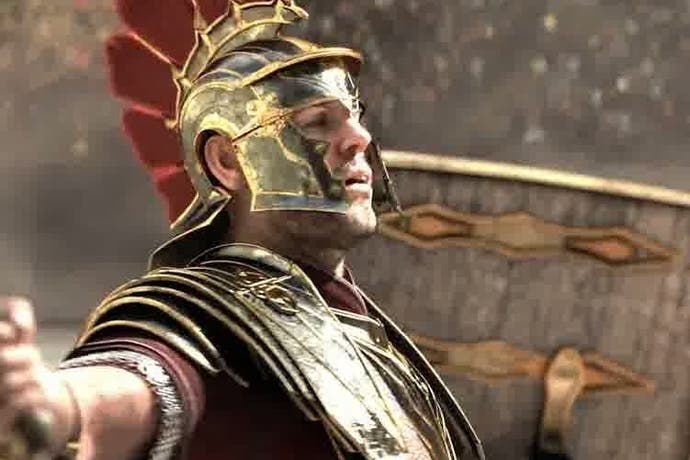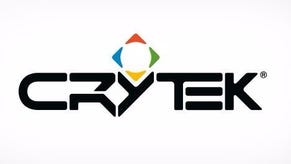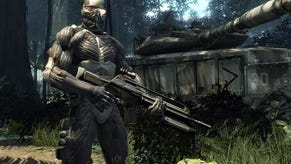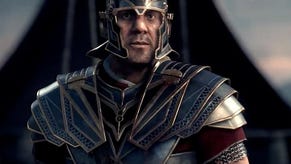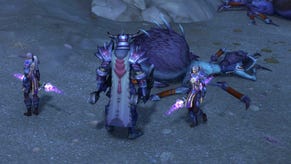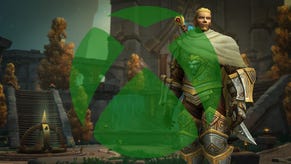Crytek combats Ryse QTE concern with improved AI
"The QTE thing, yeah, we totally get it."
Since Ryse's poor showing at E3 in June, developer Crytek has worked hard to improve the Xbox One launch title's combat system - and its chief designer has insisted it's now happy with where it's at.
Brutal third-person action game Ryse was criticised by many - including Eurogamer - for its combat, which was packed with quick time events all wrapped in a "no fail" mechanic.
At Gamescom last week Crytek showed off a new build of the game with tweaked combat and improved AI. In an interview with Eurogamer at publisher Microsoft's Xbox One media briefing event, design director P J Esteves explained how the developers responded to the disappointment of E3.
"The QTE thing, yeah, we totally get it," he said. "Coming out of E3 we were like, we put all this damn time into the facial animation and what do you see? An X button.
"We knew the mechanic worked within our combat system, so we're keeping the mechanic, but internally and with gamers' reaction we were like, yeah, it feels too QTE. And internally we didn't even like it because we have these great tech artists, Marius [Titus, Ryse's Roman soldier protagonist] and all the AI have this great facial rig, and what happens is you see Y, X. It just gets lost."
During the last two months Crytek has altered the readability of Ryse's many executions and improved the AI so enemies pose a much tougher challenge to the player. Esteves said the overall effect is that the combat is more dynamic.
But it is not accurate to say that Crytek has ditched Ryse's QTEs. Rather, it has changed the way players view them. Before, during executions, an icon reflecting the Xbox One controller face button that needed to be pressed flashed on screen. These icons are gone, replaced by an outline around the enemy that reflects the colour of the button that must be pressed.
"We went to Andy Serkis and The Imaginarium. We worked with some of the best performance capture people and all you saw was this X icon," Esteves explained. "Our cinematics director was like, you're killing me man!
"When you play it now it feels fresh. We still give you the hints: the blue outline or the yellow outline, but once we removed the buttons and went with the outline, aesthetically it felt better. You start seeing the facial animation. You still have this loop, okay, what button is it? And hit the timing. So it just made it a bit dynamic."
"We went to Andy Serkis and The Imaginarium. We worked with some of the best performance capture people and all you saw was this X icon. Our cinematics director was like, you're killing me man!"
P J Esteves, Crytek design director
The "no fail" mechanic for the executions also remains. In Ryse, you select a perk that executions trigger. You might select the health perk, for example, so that executions give lead character Marius hit points. Whatever your timing during an execution, you will receive some reward - even if you fail to press a button at all.
The level of reward, however, is determined by timing. There are four levels: recruit (which you get even if you fail to press a button), soldier, warrior and legendary. Legendary requires perfect timing.
Esteves described the difference between a recruit and legendary reward as "pretty huge". "Obviously we don't want you to fail when you've done all this work to get to a reward," he said. "You get a reward, but it's not the most.
"If you're fighting five guys and your health is low and you get an execution and you choose the health perk, let's say you don't press any buttons, you'll still get a health bump, but you maybe get 10 per cent. You get a legendary, you maybe get 70 per cent. You have to executive fewer guys to get your health back up to a reasonable state.
"It always selects the most mistimed button press. So if you do a legendary, a legendary, a legendary, a recruit [within the same execution], it'll choose recruit. It's not a fail in that you don't get the reward, but there is a difference compared to getting four legendaries."
Also changed is the visual indicator that highlights an enemy is in an execution state. Before, an icon for the B button would appear near the enemy. This has been replaced by a small skull of various types. A white skull indicates you've worked your enemy to a low health state, but if you pull of an execution stun window, the skull with flash red, indicating you can perform an execution. But unlike the white skull, the red skull will disappear after a short amount of time. There are also environmental executions, such as skewering your enemy on spikes or pushing them off a ledge. Work an enemy into the appropriate position and the skull will change again indicating you can use the environment for an execution.
"It's about readability, showing people there's more under the hood than just these simple executions," Esteves said. "Because the enemies swarm and have attack patterns, an execution is really just the fastest way to take someone out. Okay, I'm fighting this axe barbarian, if I hit him with three shield pushes, I get him into the stun window, I can take him out. One on one, it doesn't resonate well. If you're fighting five guys taking this one guy out quickly is the way to victory.
"I'm stoked, because we've been sitting in our offices really stewing. But we understand why it came off as QTEs. If you just watch it from a viewing perspective, you're like, what the heck? There's a QTE every three seconds. So we've dialled it in."
"We understand why it came off as QTEs. If you just watch it from a viewing perspective, you're like, what the heck? There's a QTE every three seconds. So we've dialled it in."

But the most significant improvement since E3, Esteves said, has been made to Ryse's AI. The E3 build posed little to no challenge, with the player breezing through swathes of enemies effortlessly.
Now, Ryse's enemies employ a pack mentality, surrounding the player with pre-determined attack patterns designed to overwhelm.
"The difficulty of combat and the challenge, it's a lot more dynamic than it was at E3," Esteves said.
"When you're doing something for E3 trying to get our message straight, maybe we dumbed down the AI a little too much, but when people play it now, they'll say, holy crap, these guys are surrounding me. When they surround you, there are behaviours and attack patterns where they're trying to work together, which is a new dynamic in this sort of crowd control combat game. You're not fighting one individual at a time. Now, your deflect button isn't just every second a guy is trying to hit me. These guys are actually trying to work together to take you down, and you use it to survive.
"Our combat still has the flash, but it has way more depth and more teeth."
After extended play players will no longer see the visual indicators and instead use the sound and animations for timing, Esteves said. Indeed on Ryse's hardest difficulty, all visual indicators, including outlines, are removed. "Y will always be the shield or a kick. X is always sword. So if you read the animations, it's always going to be a dodge a stun and then an attack," Esteves said. "But getting them right at the right timing, there's quite a lot in that little tiny gameplay loop."
Xbox One launch title Ryse is due out alongside the console in November, so Crytek only has a couple more months of development time to refine the game further. "We're day one, so we're landing this baby in hot," Esteves said. Expect more tweaks to the combat before release.
"If there's one message I want to try to get out to people, it's Ryse is a combat game. It has depth."
